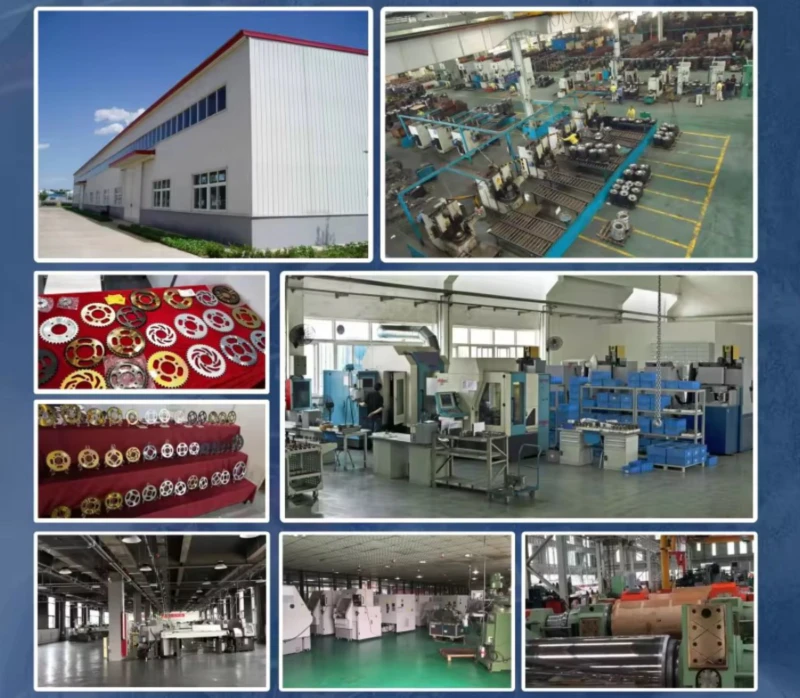China Sprocket

Sprocket for sale
-
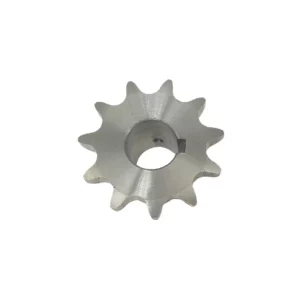
China Factory 06B 08B 10B 12B 16B 20B stainless steel Industrial Roller Chain Idler Sprocket
-
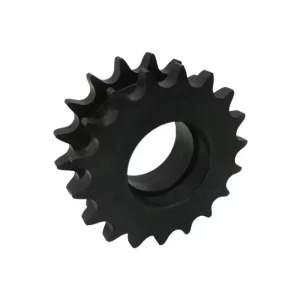
Factory direct custom stainless steel industrial chain conveyor drive sprocket OEM ODM service
-
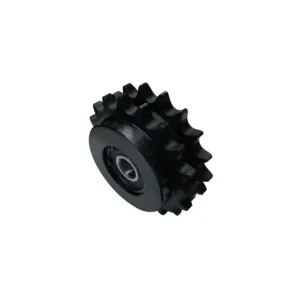
Factory price customizable C45 steel transmission 40 roller chain idler sprocket wheel gear
-
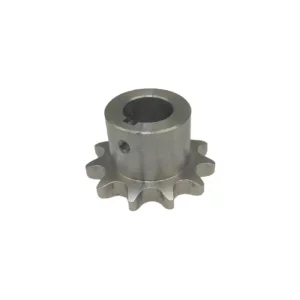
Factory-customized single-row stainless steel chain drive table wheel Idler sprocket
-
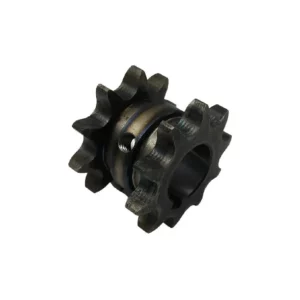
manufacturer hardening teeth C45 Steel Material double tooth sprocket for industrial
-
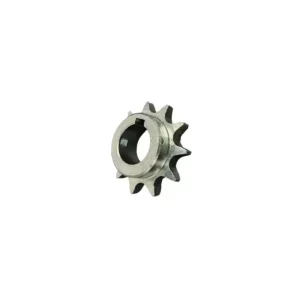
Wholesale high-quality OEM 06B 08B B series Industrial galvanized steel roller chain idler sprocket
What is sprocket?
A sprocket is a toothed wheel that works with a chain to transmit power and motion. Sprockets are an essential part of chain transmission and are usually used in bicycles, motorcycles, agricultural machinery, industrial machinery, conveying equipment, and other occasions. The sprocket transmits power from one shaft to another through meshing with the chain, realizing the transmission of energy and motion.
The sprocket mainly comprises teeth, a shaft hole, a keyway, a spokes, and a hub. The tooth part is the sprocket part that meshes with the chain. Its shape and size are determined according to the type and specifications of the chain. The shaft bore is the hole where the sprocket mounts to the shaft, and its size and shape are determined by the shaft’s size and the sprocket’s purpose. The keyway is the part where the key is installed to secure the sprocket on the shaft. The spokes and hub form the support structure of the sprocket and bear the force and torque transmitted by the chain.
According to other standards, sprockets can be divided into different types, such as single-row sprockets, double-row sprockets, multi-row sprockets, toothed sprockets, toothless sprockets, etc. Single-row sprockets are the most common type and mesh with only one row of chains. The double-row sprocket meshes simultaneously with both rows of chains to transmit greater torque or power. Multi-row sprockets are composed of multiple single-row or double-row sprockets and are used for special applications.
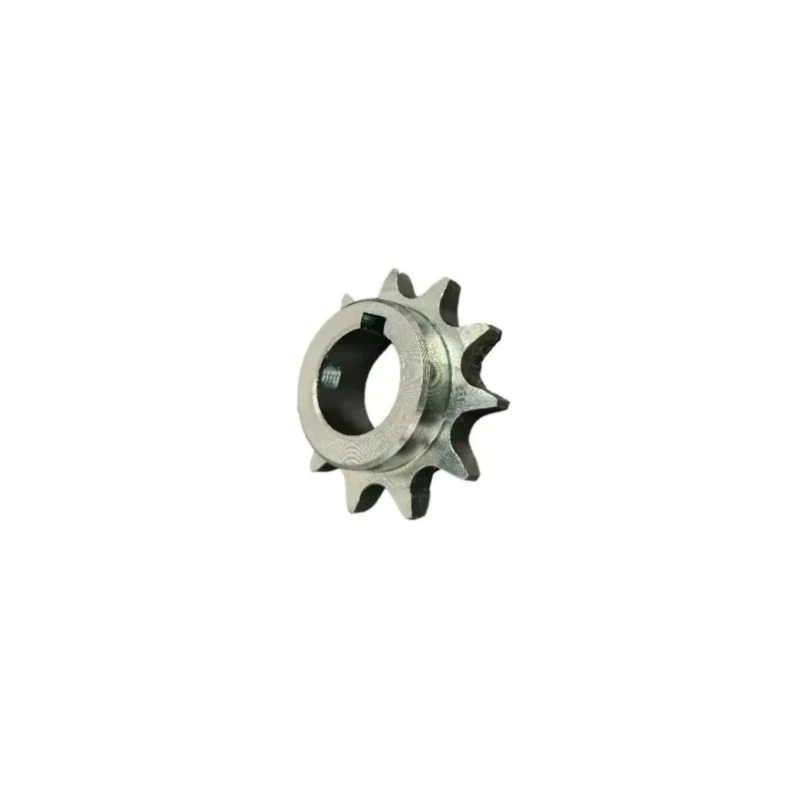

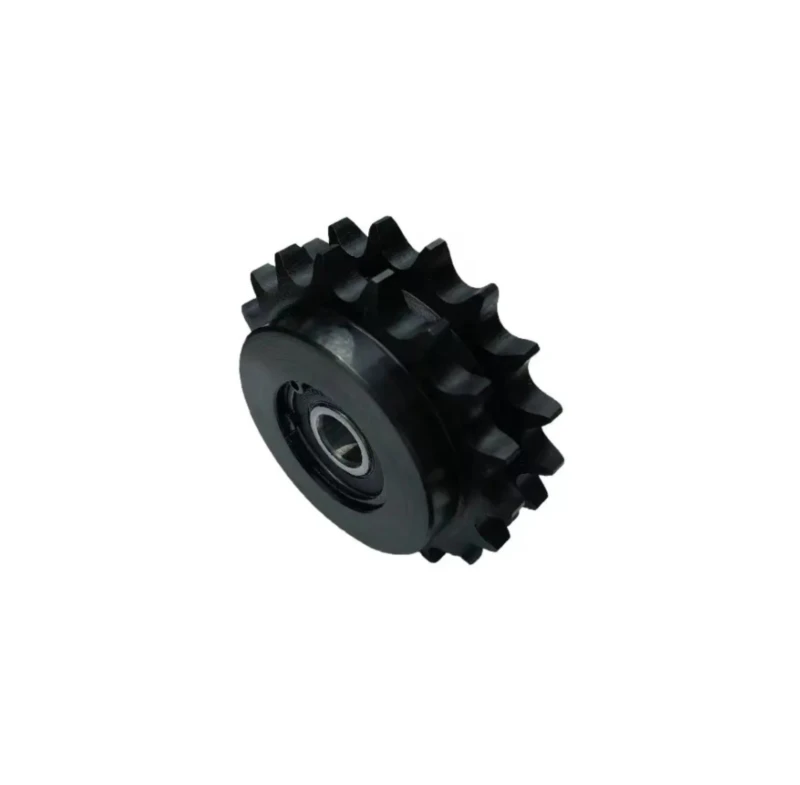
Sprocket’s main functions
1. Power transmission
The sprocket transmits power from one shaft to another through the chain and is the core component in the power transmission system. It is widely used in various vehicles (such as bicycles, motorcycles, cars) as well as industrial machinery.
2. Speed and torque conversion
Sprockets can change the speed and torque of the transmission system. For example, by selecting drive sprockets and driven sprockets with different numbers of teeth, the speed can be increased or decreased and the torque can be amplified or reduced to meet the needs of different working conditions.
3. Precise synchronous transmission
Where precise synchronization is required, a sprocket and chain system ensures that the relative position between the two shafts remains constant. This is particularly important in fields such as automation equipment, packaging machinery and printing machinery.
Advantages of sprocket
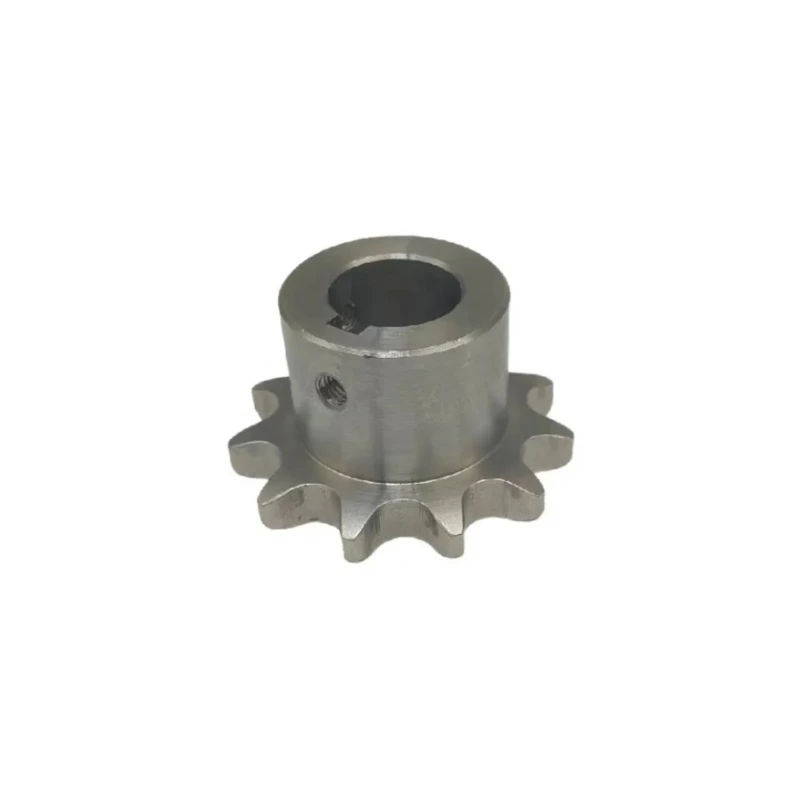
High Efficiency
Sprocket and chain systems have high transmission efficiency, often exceeding 95%. This makes them ideal for applications where energy efficiency is critical.
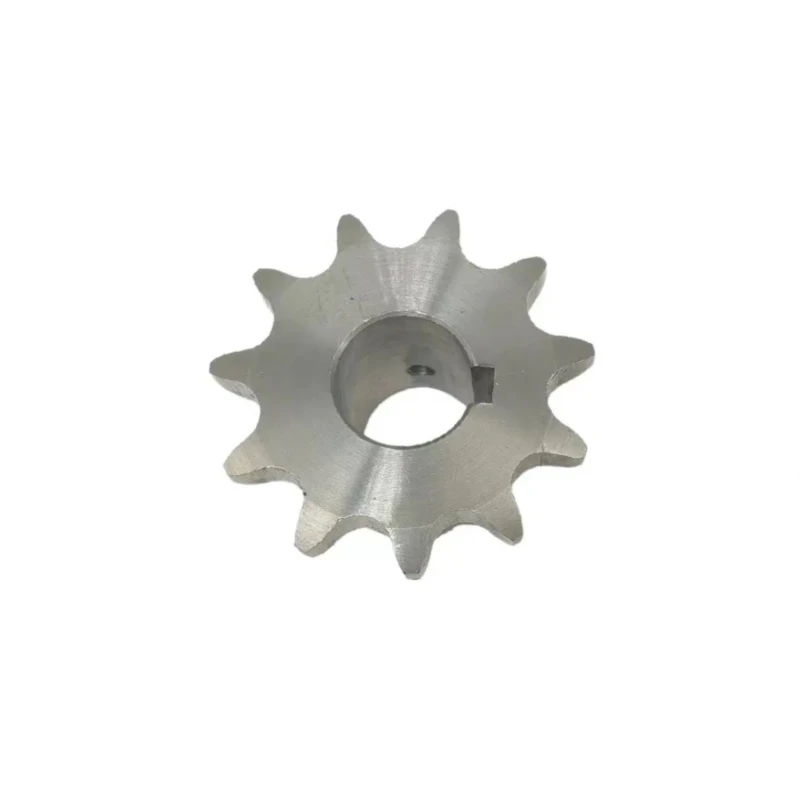
Durability and Strength
Sprockets are typically made from robust materials like steel or alloy, which can withstand high loads and harsh operating conditions. This makes them suitable for heavy-duty applications in industrial machinery and vehicles.
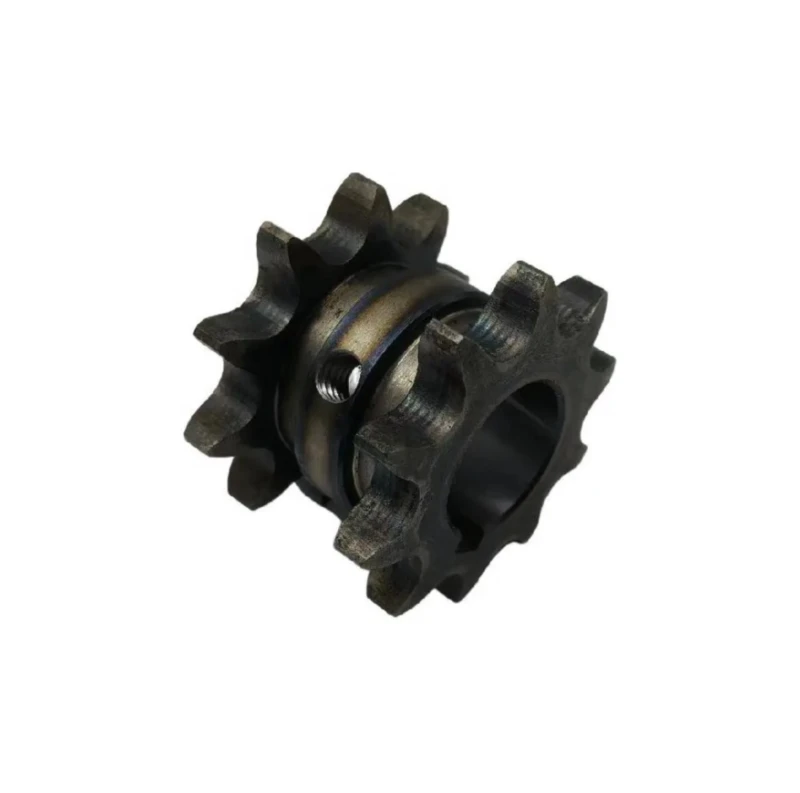
Precise Timing and Synchronization
Sprocket and chain systems ensure precise timing and synchronization of movements, which is essential in engines and automated machinery. This precision helps in maintaining accurate operations and reducing the risk of mechanical errors.
Application industries of sprocket
1. Automotive Industry
Engine Timing Systems: Sprockets are essential in the timing chain systems of internal combustion engines, ensuring precise synchronization of the crankshaft and camshaft.
Motorcycles: Used in the chain drive systems to transmit power from the engine to the rear wheel.
Bicycles: Sprockets, or cogs, are a fundamental component of the drivetrain, allowing for speed and torque adjustment.
2. Industrial Machinery
Conveyors: Sprockets drive the chains in conveyor systems, moving materials efficiently in manufacturing plants, warehouses, and distribution centers.
Packaging Equipment: Used in packaging machines to coordinate the movement of different parts, ensuring smooth and synchronized operation.
Material Handling: Sprockets are critical in hoists, lifts, and other material handling equipment, providing reliable and durable power transmission.
3. Agricultural Machinery
Harvesters: Sprockets are used in combine harvesters and other agricultural equipment to drive the mechanisms that process crops.
Tractors and Plows: Employed in the drivetrain and other moving parts, ensuring efficient operation in tough field conditions.
Seeders and Planters: Help in the precise placement of seeds and fertilizers.
4. Construction Equipment
Excavators: Sprockets drive the tracks of excavators, providing the necessary power and control for movement on rugged terrains.
Bulldozers: Used in the track systems to transmit power and enable the machine to push heavy loads.
Cranes: Involved in lifting and moving heavy materials on construction sites.
5. Mining Industry
Mining Conveyors: Sprockets are critical in conveyor systems that transport extracted minerals and ores.
Drilling Equipment: Used in drilling rigs and other machinery to transmit power effectively.
Crusher Machines: Employed in crushing and grinding operations to handle large, heavy loads.
6. Food and Beverage Industry
Food Processing Equipment: Sprockets are used in conveyor belts and other machinery that processes and packages food products.
Beverage Production Lines: Help in the automated production and packaging processes, ensuring smooth operation and high efficiency.
7. Textile Industry
Weaving Machines: Sprockets are used in looms and other textile machinery to control the movement of threads and fabrics.
Dyeing and Finishing Equipment: Drive the machinery involved in dyeing, printing, and finishing textiles.
8. Aerospace Industry
Aircraft Maintenance Equipment: Used in ground support equipment and other machinery involved in the maintenance and servicing of aircraft.
Manufacturing Equipment: Involved in the production of aerospace components, ensuring precise and reliable power transmission.
9. Marine Industry
Boat Lifts and Hoists: Sprockets are used in equipment that lifts and moves boats and other marine vessels.
Dockside Machinery: Employed in machinery that handles cargo and equipment at docks and ports.
10. Renewable Energy
Wind Turbines: Sprockets can be found in the mechanical systems of wind turbines, helping to convert wind energy into electrical power.
Hydropower Plants: Used in the machinery that harnesses water flow to generate electricity.
11. Printing Industry
Printing Presses: Sprockets help in the movement and synchronization of different parts of printing presses, ensuring high-quality output.
Binding Machines: Used in the machinery involved in binding and finishing printed materials.
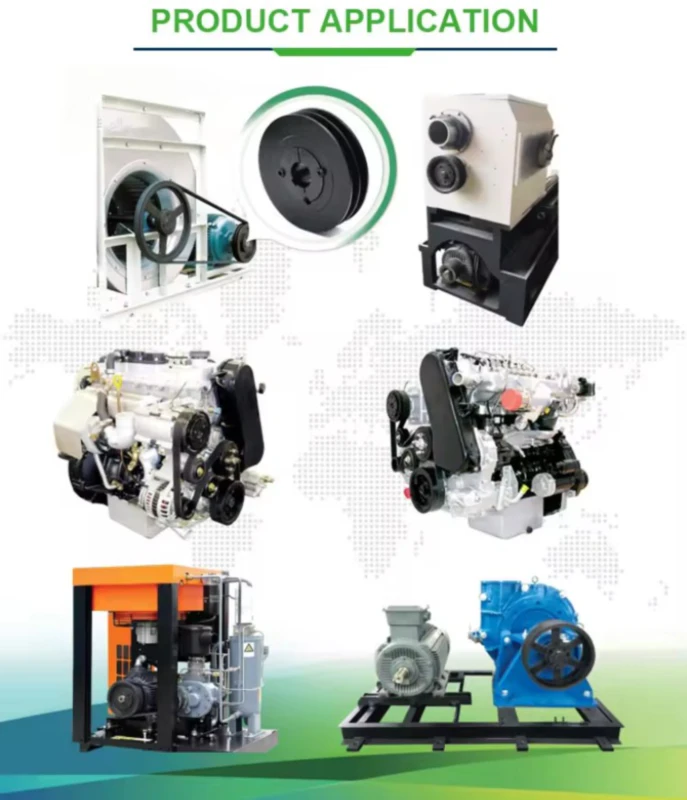
Sprocket care and maintenance
1. Cleaning
Regularly clean the oil, dust and debris on the sprocket surface and chain. You can use a brush, compressed air or detergent to clean. Make sure the surface of the sprocket is clean to prevent impurities from entering the transmission system and affecting normal operation.
2. Lubrication
Keeping sprockets and chains well lubricated is a critical maintenance step. Apply a suitable lubricant, such as chain oil or grease, to the sprocket teeth to ensure the chain can run smoothly on the sprocket and reduce wear and friction.
3. Tight adjustment
Check the chain tightness regularly to ensure proper clearance between the sprocket and chain. A chain that is too tight or too loose will affect the efficiency and life of the drive system. Use a chain tensioner or adjust the chain tension manually.
4. Tooth shape inspection
Regularly check the sprocket tooth profile for wear, especially under heavy loads or frequent use. If the tooth profile is found to be severely worn or deformed, the sprocket should be replaced in time to avoid damage to the transmission system.
5. Replacement
Replace sprockets and chains regularly based on usage and manufacturer recommendations. Sprockets and chains that are severely worn or have exceeded their service life will reduce the efficiency and reliability of the transmission system. Timely replacement can avoid losses caused by failure.
6. Anti-rust treatment
Anti-rust treatment is necessary for sprockets that are exposed to moisture or are susceptible to corrosion. Using anti-rust coating or galvanizing can effectively extend the service life of the sprocket.
7. Regular inspection
Regularly check the status of the sprocket and chain, including appearance, tightness, lubrication, etc. Finding and fixing problems promptly can avoid big problems caused by minor glitches.
8. Regular lubrication and maintenance
Lubricate and maintain regularly according to manufacturer’s recommendations and usage. This includes cleaning, lubrication, inspection, adjustment, etc. to ensure that the sprockets and chains are in good working order.
9. Check the transmission system regularly
The sprocket is often one of the key components of the transmission system. Regularly check the status of the entire transmission system, including chains, sprockets, bearings, etc., to ensure the overall performance and reliability of the system.
Manufacturing process of sprocket
1. Material selection
Choose the material suitable for manufacturing the sprocket, usually steel (such as carbon steel, alloy steel), stainless steel, aluminum alloy or engineering plastics, etc., based on the use of the sprocket and the working environment.
2. Material pretreatment
Pre-process selected materials, including cutting, forging and other processes, to obtain blanks that meet manufacturing requirements.
3. Forming processing
Turning: Use a lathe to process the blank into the basic shape of the sprocket, including the processing of the wheel body and hub.
Milling: Use a milling machine to process the gear teeth of the sprocket to ensure the accuracy of the tooth shape and surface finish.
Drilling and tapping: Carry out the necessary drilling and tapping on the sprocket to facilitate subsequent installation and fixing.
4. Tooth processing
The tooth profile processing of the sprocket is a key step in the manufacturing process, and the following methods are usually used:
Gear milling: Use a milling machine and a tooth profile milling cutter to process the tooth profile of the sprocket, which is suitable for small batch production and simple tooth profiles.
Gear hobbing: The gear hobbing machine is used for tooth profile rolling, which is suitable for mass production and standard tooth profiles.
Wire cutting: Use wire cutting machine tools to cut the tooth shape of the sprocket, which is suitable for processing high-precision and complex tooth shapes.
5. Heat treatment
Heat treatment is performed on the sprocket to improve its mechanical properties and wear resistance, which usually includes quenching, tempering and other processes, as well as surface hardening treatment to improve the wear resistance and service life of the sprocket.
6. Surface treatment
Surface treatment is performed on the sprocket to improve its anti-corrosion performance and appearance quality. Common methods include galvanizing, phosphating, spraying, etc. Select the appropriate surface treatment process according to specific requirements.
7. Assembly and testing
Assemble the processed sprockets, including the processing of shaft holes and keyways, and the installation of bearings. At the same time, quality inspections are performed, including inspections of size, tooth shape, hardness, and surface quality, to ensure that product quality meets requirements.
Why choose our company?
1. High-quality products: Our company is committed to providing the highest-quality sprocket. Our products are precision-engineered and manufactured using advanced materials to ensure durability, reliability, and consistent performance.
2. Comprehensive Service: We pride ourselves on providing excellent customer service. Our professional team is ready to answer your questions, provide technical support, and provide solutions tailored to your needs.
3. Competitive Prices: Our company offers competitive prices without compromising quality. We believe in creating value for our customers and work hard to ensure our products fit every budget.
4. Excellent after-sales support: We know a product is only as good as the support you receive after purchasing it. Our company provides comprehensive after-sales services, including timely repair, replacement, and maintenance, ensuring that your sprocket is in optimal condition for a more extended period.
5. Rich product range: Our company provides a variety of sprocket shafts to meet different applications and requirements. We can provide you with the right product.
